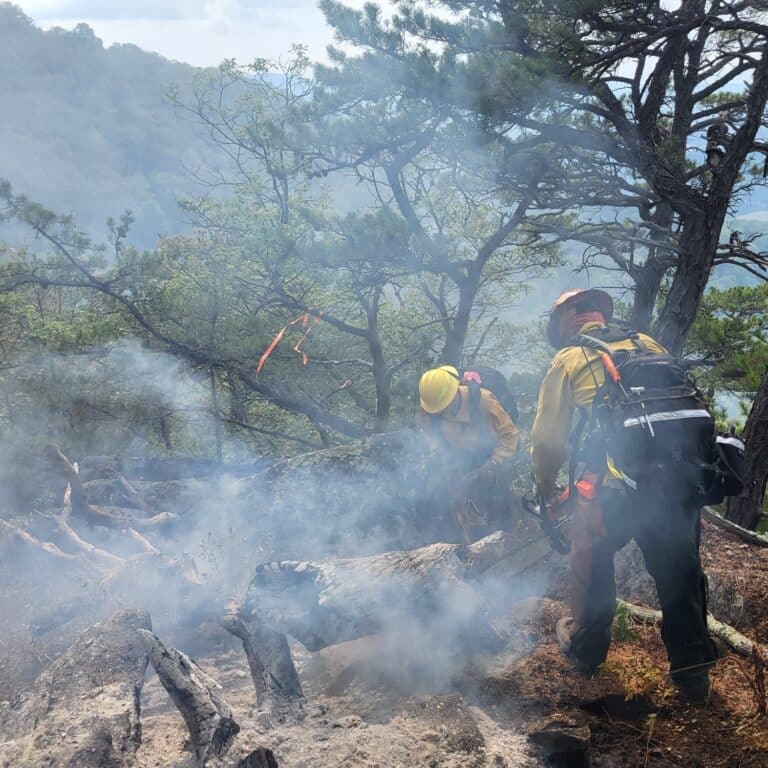
Standing before a mostly-full meeting room at the community center, J.C. Powell emphasized the benefits of a clean coal research facility proposed for an empty tract of land on the edge of town:
It will create dozens of good jobs. It will further the cause of American energy independence. It will combat global warming and it will make practical, affordable use of a resource abundant in the region.
After his pitch, the audience responded with an assortment of questions and comments, both supportive and skeptical, indicative of deeply-divided public opinion on continued investment in fossil fuels. There’s no such thing as “clean” coal, some say. No, coal will remain king for decades, comes the reply – why not use it smarter?
Powell, a retired Exxon engineer, considers the idea a pragmatic compromise between current realities and clean energy ideals; he called clean coal “a bridging step to the future.”
Early this year, Powell and a group of other concerned citizens hit upon the idea of a coal research project while brainstorming ways to jumpstart the local economy. They presented a proposal to the town council, which committed a site to the project last spring and worked with Powell and company to apply for a $100 million grant from the Department of Energy. That amount would construct and staff and the research facility, named the “Elkton Energy Research Quadrangle” (EERQ), for five years, according to the application.
Research at the EERQ, Powell said, would focus on coal gasification, a process that converts coal to more efficient synthetic gas. Coal gasification, which also makes post-combustion carbon capture easier, is a significant area of current energy research that has benefitted from the $3.4 billion in federal stimulus funds marked for fossil fuels research.
While a handful of U.S. power plants now use coal gasification to generate electricity with “Integrated Gasification Combined Cycle,” or IGCC, technology, cost barriers have prevented widespread adoption of gasification in the U.S. IGCC is a combination of several discrete technologies including coal-to-gas conversion, gas-powered generation of electricity (both well-established) and carbon capture (not-so-well-established). Lowering the cost of commercial-scale coal gasification would be a major research objective at the EERQ, Powell said.
Earlier this month, the Department of Energy rejected the town’s initial grant application for the EERQ, but gave some advice on revising the proposal and encouraged the town to reapply. Powell said a new and improved grant application will be resubmitted by January 1.
Soon after the EERQ proposal became public, local environmental groups reacted with concern.
“We [also] want good jobs and a good future for the people of the Valley. We just want the emphasis to be on energy sources that are not going to add more carbon to the atmosphere,” said Cathy Strickler, chairwoman of the Climate Action Alliance of the Valley.
Another organization offered more forthright opposition.
“Clean coal, in concept, is like healthy cigarettes. It’s a complete oxymoron,” said Tom Cormans, the Virginia director for Appalachian Voices. “There’s no way we can call coal ‘clean’ when you take into account the extraction process.”
Cormans noted that carbon capture and sequestration are energy-intensive processes that siphon off a significant amount of the power generated at a given plant. Therefore, he said, generating the same amount of electricity for the grid will require significantly more coal, and significantly more coal mining in Appalachia, which his organization describes as “one of the greatest environmental and human rights catastrophes in American history.”
Comparable investment in wind power, solar power and energy efficiency, Cormans continued, would better serve the region’s energy, environmental and economic needs. He pointed to a 2009 study published by the Appalachian Regional Commission, which found that “a bold energy-efficiency initiative” in the region could, by 2030, cut consumption by 24 percent and create more than 77,000 new jobs.
An equal and opposite reaction came from the American Coalition for Clean Coal Electricity.
“For folks to say that there’s no such thing as clean coal technology – that just invites the response that there’s no such thing as reliable wind or solar power,” said Joe Lucas, senior vice-president of communications for ACCCE.
Lucas said renewable energy technologies like wind power and solar power are viable complements to coal, but he called the claim that these can replace coal “extremely misleading” because they can’t provide a constant baseline amount of energy.
Given that energy utilities must focus on providing reliable power and affordable power, Lucas called continued use of coal a necessity, he said. While reducing carbon emissions remains a large environmental obstacle to burning coal, Lucas continued, precedent has been for doing so by past technological advances which have already made coal a cleaner fuel by reducing emissions of sulfur dioxide, nitrogen oxide, mercury and other pollutants.
Before long, the debate begins to feel like an intractable conflict – politicized, replete with claims and counter-claims, facts and counter-figures, riddled with terms like “clean coal” and “environmentalist” whose meanings vary wildly depending on who uses them – and now, it’s come to Elkton, a town of 2,600 just west of Shenandoah National Park.
BRO wants to know: Do you support a coal gasification research facility in Shenandoah?







